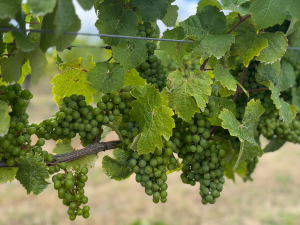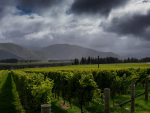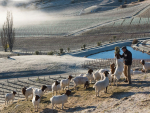Marlborough
Nature gave Marlborough grape growers bumper crop levels this year, with high inflorescence initiation and a stellar Sauvignon Blanc flowering. But with a wine surplus, yield caps and cool January conditions, along with the risk of pre-harvest rain, the region would have fared better with a cool flowering and warm summer, not the other way around, says viticulturist Stephen Dempster.
It's a vintage that requires cooperation, says viticulturist and Dog Point Vineyard founder Ivan Sutherland. "This is the year where growers and companies have to work more closely together and equate volume with supply and demand."
 |
|---|
|
Matt Mitchell
|
Stephen says prudent winegrowers have dropped crop, with some going in relatively early to cut canes, as a "fairly brutal" way of reducing yield significantly, and at less cost than bunch thinning. Others have used mechanical shaking, but the 10 - 15% reduction would not necessarily be sufficient for the high yielding year. As well as thinning crops, they would be looking to reduce clumped areas, to mitigate disease risk if La Niña brings wet weather in the lead up to vintage. "NIWA keep suggesting that the weather events are getting more extreme no matter what. That's another concern for the future," Stephen says.
"I think Mother Nature is having a bit of a laugh," says Matt Mitchell, Marisco's General Manager of Wineries, acknowledging a perfect storm of potentially record-breaking bunch weights, tough international markets, the large 2022 and 2023 vintages, a cool Christmas and new year period, and forecasts for "mediocre" weather.
But he's of the 'that which does not kill you makes you stronger' mindset, seeing opportunity for Marisco, and Marlborough, to learn from the season, grow its knowledge, and be better prepared for future challenges. "We've had a number of these vintages in the last five years. And I do think that the collective Marlborough IP is such that we know how to handle them," Matt says. "The cleverness of your average Marlborough winemaker is such that we'll make good calls."
Marisco is using the season to learn more, harnessing the luxury of autonomy - with its wineries, vineyards and harvesters - to run trial work. That includes mechanical shaking on selected blocks, for crop reduction and disease mitigation - removing trash from the internal parts of the bunch. They've also cut canes on some blocks, to compare that as a yield management tool, as well as traditional canopy work on ultra-premium blocks, with bunch removal and leaf management. "So, I think at the end of this intake period, we'll have quite a comprehensive look at strategies around managing these really large harvest, where the weather is less than ideal."
From a winery perspective, they have assessed current supplies, along with demand, and are heading into vintage with a range of strategies, exploiting their ability to be nimble. That includes decisions to not make certain wines this year, because they have good volumes of '23 and '24 vintages. "We can be really focused on our bread and butter, on our core brands and our core varietals, and just do the absolute best job we can with those." Matt says tricky seasons are going to come more frequently, and having techniques developed in seasons like this one, "broadening our knowledge base from a winegrowing perspective", will be invaluable in the long run.
Ivan, who has more than 40 vintages under his belt, including 20 years at Dog Point, has a buoyant perspective on 2025. Speaking on 23 January, he says the vineyard look "picture perfect" after a "nice even budburst", spring rain, warm dry weather over flowering and fruit set, then a cooling to slow things down. That cool shift is good for flavours and compositional balance, and for keeping disease risk low he says. "Warm settled weather with the cooler nights would be ideal through to late March."
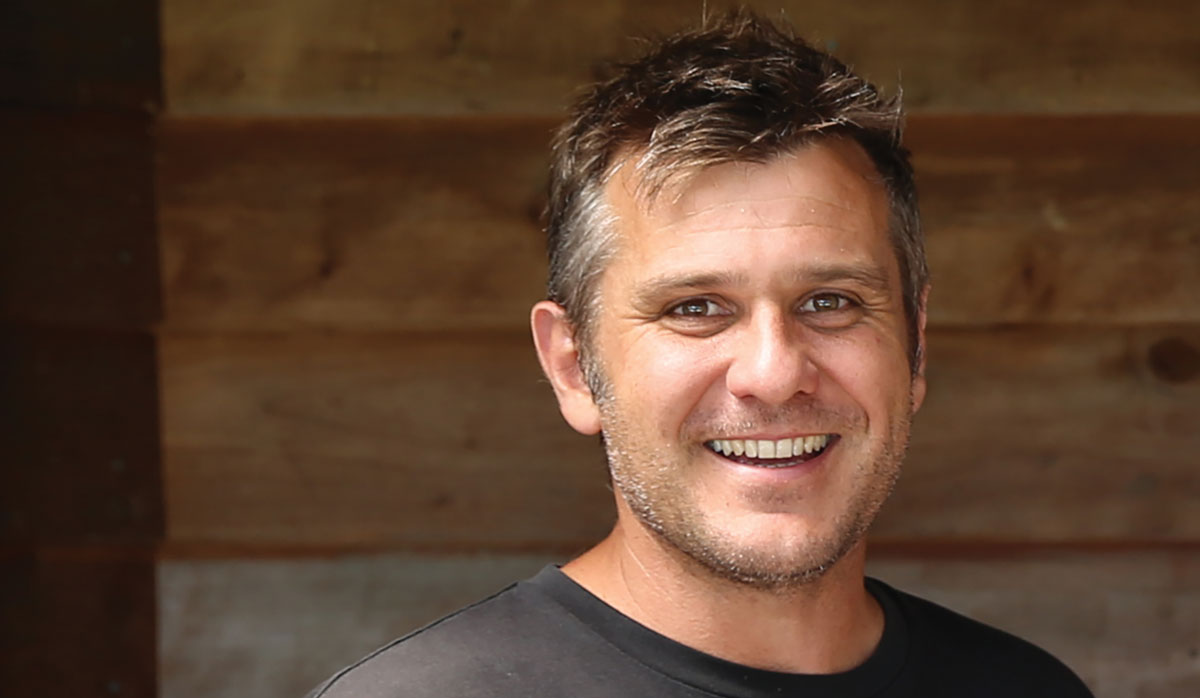 |
|---|
|
Todd Stevens
|
Nelson
To the west, Neudorf's General Manager Todd Stevens says Nelson's flowering weather was "some of the best we've seen", with crop loads looking "pretty solid" as a result. But the weather between Christmas and 24 January was dreary and the region's growers are hoping summer will shift up a gear. "From a growing point of view if the season doesn't buck its ideas up, with this crop load, it could be a bumpy finish." With the economic headwinds, wine companies are watching their pennies, sticking to their knitting, and adopting a mantra he's learned from Marlborough colleagues: "survive through '25".
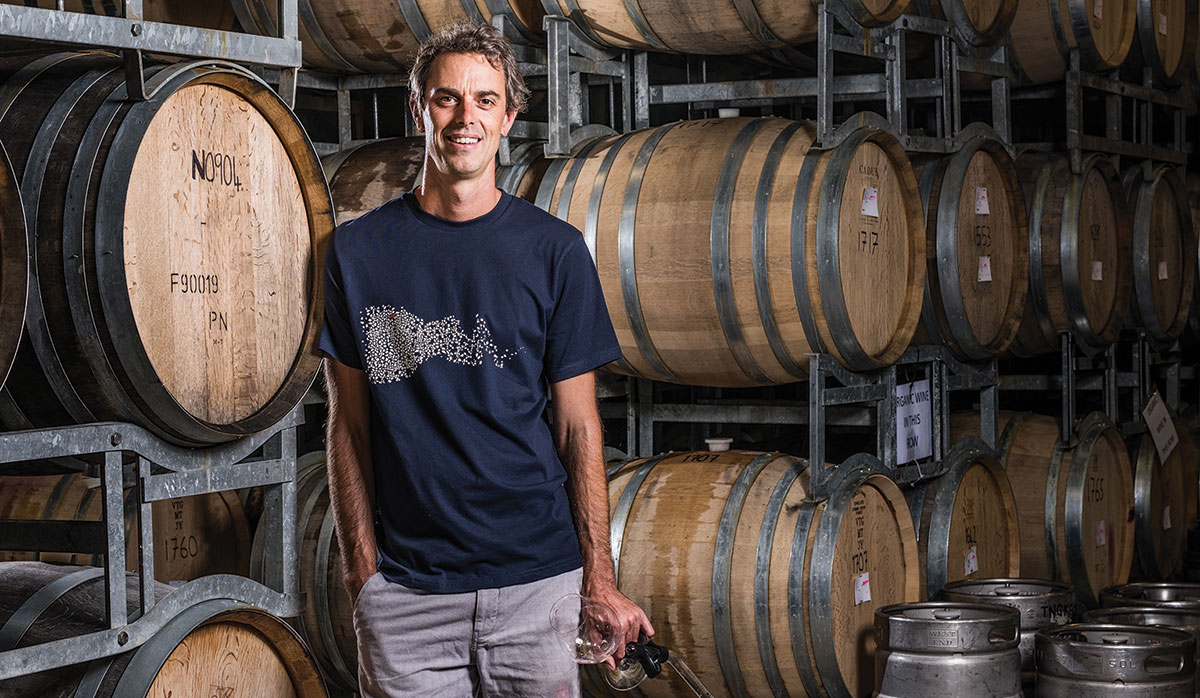 |
|---|
|
Dom Maxwell
|
North Canterbury
In North Canterbury, Greystone winemaker Dom Maxwell welcomed the cool change in late December, following a run of hot weather in the lead up to Christmas. "We were going into what felt like drought conditions," he says. Then the "switch was flicked" and cooler days made for healthier vines and better canopy. "And it's slowed the season down, which has been a weight off the vineyard team's mind." Despite inclement conditions, there's been no increase in disease pressure, thanks to temperatures peaking at 15-17C, "which is not ideal for disease growth", he says. "From a quality point of view, I'm really happy."
Central Otago
Even the outlier, Central Otago's growing season is in a contrast to the rest of the country, with summer temperatures up to 28C. “Nature really likes Central Otago grape growers,” says viticulturist Timbo Deaker on 22 January, having just called the volunteer firefighters out to a Bannockburn vineyard, where a mower sparked flames in tinder dry conditions. While other regions are characterised by January’s grey skies and cool temperatures, Central Otago is on fire watch.
The region, excluding Gibbston and Alexandra, had major frost damage in the first week of November 2024, leading to expectations of a 25% drop on the normal crush. But, despite a “turbulent” and wet spring, Central enjoyed a “remarkably successful”, very uniform flowering period, lifting yield expectations to 10-15% below average. “Again, Mother Nature has been very generous to us, as she has over the last five years,” Timbo says.
He’s positive about the lead up to harvest, given expectations of La Niña weather conditions, which can be challenging for the rest of New Zealand’s wine regions, “whereas it’s remarkably kind and generous to us”. It’s a good year for below average production, given downward pressure on the economy and wine markets, he adds. But while wine times are tough, he’s feeling glass half full as he watches Central Otago Pinot Noirs slip off the bulk wine market. “That’s the first kind of sign of things improving.”
North Island - Auckland
Auckland had a very good flowering season, “so the yields are healthy but not excessive”, says Kumeu River Winemaker Michael Brajkovich on 24 January. “The fruit looks very good indeed.” Summer to date has been cool, with the warmest temperature 27C in mid-December. “So far in January we have had one day reach 25C,” Michael says. “The best thing is that recent conditions have been dry. December had 74mm of rain, but so far in January only 16mm. We expect to start the sparkling wine harvest sometime around Waitangi Day, and the Chardonnay table wine pick a couple of weeks after that.”
Gisborne
Mark Thompson, Chief Winemaker at GisVin and Chair of Gisborne Winegrowers, says “exceptional” flowering and good bunch sizes suggest a good average crop for the region. But, like most of the country, a cool switch in late December brought gloomy, rainy conditions. Speaking on 24 January, the kind of sunny day (“blowing like the proverbial, drying everything out very quickly”) he’d like to see more of, Mark says fruit looks clean. He also notes that the region’s growers and winemakers have learned a lot in recent rain-afflicted harvests. “We have definitely developed our toolkit over 2022 and 2023, and we are certainly producing better wines as a result.” But tough international markets, and reduced demand from Marlborough wineries, have impacted Gisborne, he adds. “There appears to be a lot of stock carried over from '23 and '24.
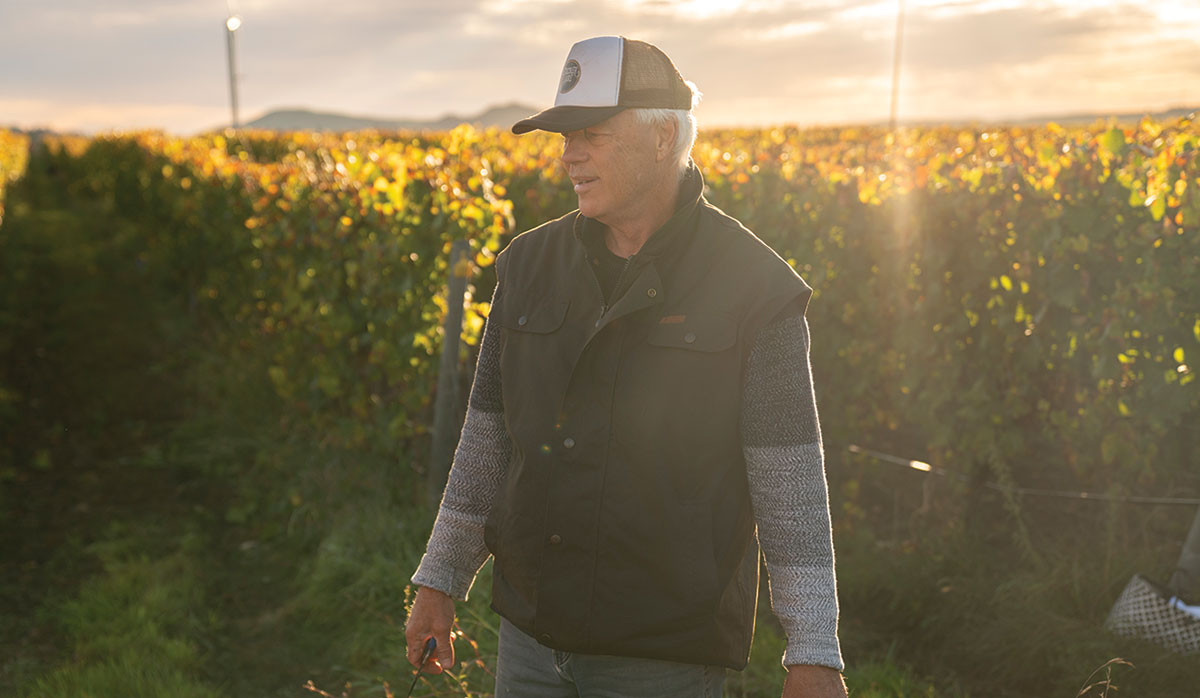 |
|---|
|
Tony Bish
|
Hawke's Bay
Looking through a Chardonnay lens, winemaker Tony Bish says flowering set Hawke’s Bay up well, with moderate crops welcomed by growers after two tough years. Hawke’s Bay’s yields were down 37% in 2024, in a blow to a region hit hard by Cyclone Gabrielle the previous harvest. Speaking on 24 January, Tony was feeling optimistic about the season, with vineyards looking “pristine”, and good bunch numbers spread out. “We are set up well, to be honest.” He’s been surprised to find some hen and chicken on clones typically not affected by Millerandage, “but that’s kind of really good for flavour, so it actually looks good”.
In the lead up to Christmas, forecasts were for an early harvest, but with a climatic shift on Boxing Day bringing cooler, south westerly air flows and a drop in growing degree days, the season is relaxing back to more typical timing. There’s been a little rain, but “nothing problematic”, with the vineyards progressing despite dreary days. Tony welcomes the likely return to a March picking window, noting that early February harvests can be beset with heat. From late January onwards is the critical period, he adds. “Hopefully summer comes back and all will be well.” When it comes to the risk of vintage rain events, which have been painfully frequent in recent years, he says it’s a week-by-week watch. “We just seem to be getting a lot of weather.”
Meanwhile on the sales front, Tony Bish Wines isn’t carrying any surplus stock over, and had record sales months in September, October and December of 2024, with Australia, New Zealand and the United Kingdom all performing well. “Chardonnay has had a good year and we are really looking forward to releasing the ‘24s which are, of course, especially good.”
Viticulturist Emma Taylor is reluctant to jinx what’s looking like a good season (“you don’t want to make the viticulturist and winemaker curse, in saying it’s too good”) but is feeling quietly upbeat. “Before Christmas it was so stinking hot and I was quite worried in Hawke’s Bay about how early we would need to pick. Then of course we’ve had this less-than-ideal January weather, where it’s been cooler and wetter and we’re no longer facing a drought.”
The inclement weather, with a good dose of wind, has brought the season’s timing back into alignment, she says, seeing the district go into veraison in late January, as she’d expect. There’s some talk of disease pressure, thanks to the change in conditions “but I haven’t seen any out there myself, she says.
Even with heightened disease risk, the change in weather eased water pressures, with people looking at half of their consents gone before Christmas. “We would have been in a stress position this time of year no matter what.”
Going forward, the strong likelihood of La Niña conditions, with risk of subtropical lows and increased rainfall on New Zealand’s east coast, is a concern, given the wet vintages Hawke’s Bay has been dealt in recent La Niña years. “But my hope is that it comes at the end of harvest and not during.”
Wairarapa
Excellent spring conditions resulted in “amazing” flowering and good crop levels in Wairarapa, says Wairarapa Winegrowers Association Chair Wilco Lam, partner and winemaker at Oraterra. But predictions of an early harvest were dampened by the cool and wet Christmas and new year conditions, which boosted vegetative growth and vineyard workloads, while setting the vintage dates back to a more typical March start. “Now everything has greened up and is fresh,” says Wilco, who is “super happy”, looking forward to a temperature boost in February to carry crops into harvest.
Ata Rangi Winemaker Helen Masters welcomed the change to cooler weather after the warm start to the growing season. “For us now, if we have no rain for the rest of the season it’ll be magic.” Crops are not particularly even, some canes have no fruit, and a lot of the bunches are not carrying a shoulder, which is great, she says. “We are only doing minimal crop thinning – more of a manicure really – which is a lovely position to be in.”
With weather-beset 2022 and 2023 growing seasons resulting in light crops, growers will want good crop levels to follow the “phenomenal” 2024, Wilco says. Speaking on January 20, the day after Toast Martinborough packed the region with wine-lovers, he says the depressed Wellington economy does impact on the region’s producers, but an influx of tourists and day visitors is keeping Wairarapa wines pouring.
Vineyard Values Pull Back
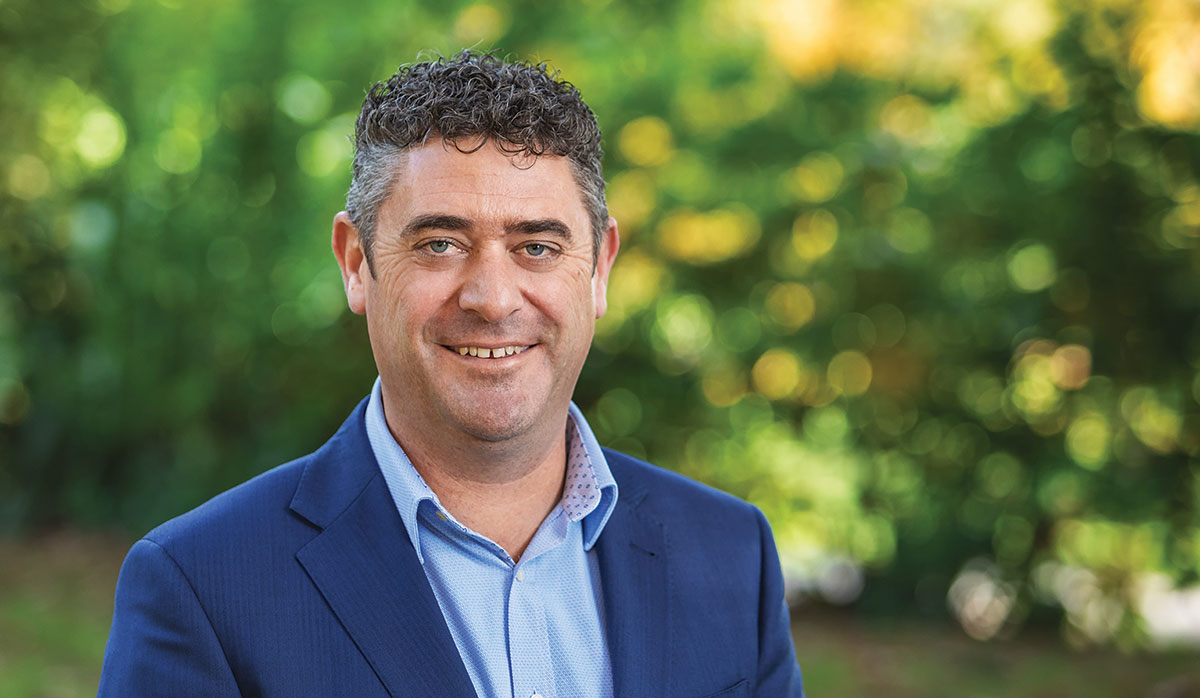 |
|---|
|
Mike Poff
|
A projected lower price for fruit, capping of yields, and increases in growing costs are seeing vineyard values reduced. Bayleys Marlborough viticulture specialist Mike Poff says the past 18 months have seen a general reduction in value in Marlborough, with those drops impacted by several factors, included contracts and vineyard investment. Where growers have invested in refurbishing/replanting their vineyards, or started that process, the results are definitely better. Likewise, vineyards with a good contract or lease are of "significantly higher value" than blocks with uncontracted fruit, Mike says.
Buyers tend to be individuals, or investment groups or companies, looking strategically at return on investment, with banks measuring up the assets and the bankability of them." However, the region has been in a position of oversupply before and he's hopeful that within 18 months to two years the market will regain buoyancy. "I am positive in five years' time we will be in a completely different place."
Yield & Ripening
The overriding influence determining the duration of ripening appears to be vine yield, says Dr Mike Trought. Research published in VineFacts with Rob Agnew at Plant & Food Research in 1996, suggests that a Sauvignon Blanc vineyard producing about 7 tonnes per hectare, or 3kg per vine, can expect to reach 21.5 Brix 33 days after véraison (8 Brix), while those with around 18T/ha (8kg/vine) will take 58 days. Those findings are extrapolated from 10 years of data from a single site, showing that at between 3.5 and 7kg per vine, the duration of ripening (8 to 21.5 Brix) increased by five days for each additional 1kg in vine yield.
What Happened to Summer?
James Morrison, who supplies the Winegrower Magazine ‘Weather Watch’, says predictions were for a cracking La Niña summer with hotter than average temperatures. But a chill shift around Christmas put a dampener on those plans. “Whilst a few cool and wet days during summer can happen from time to time, it was the prolonged nature of this event that has been most evident and will take further study to understand. As warmer conditions have returned later in January, it is still possible that the remainder of summer and early autumn will see temperatures closer to average. However the five-week period of weather that resembled early September will certainly put a dent in the temperature averages and growing degree day totals for this summer.”





